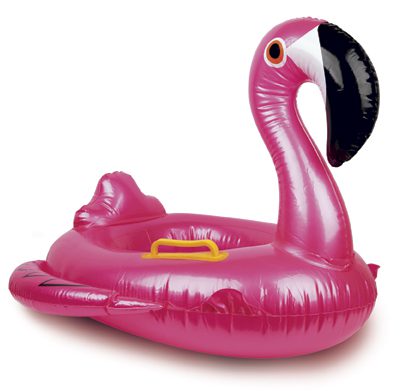FOCUS ON CONDO ASSOCIATIONS

SPECIALTY LINES MARKETS
FOCUS ON CONDO ASSOCIATIONS
Can common areas reopen? Will there be a silver lining?
By Lori Widmer
It wasn’t that long ago—2019— when 25% to 27% of the U.S. population lived in a community association, according to figures presented by the Foundation for Community Association Research. Then 2020 and its challenges on everything ushered in a mass exodus to the more spacious suburbs. A Harris Poll in early 2020 revealed that 43% of Americans living in urban areas were considering a permanent move to more spacious surroundings.
Condo sales prices nationally dipped 1.4% year over year, according to Redfin, as demand lagged. However, single family home prices inched up, and soon condos were looking more attractive to buyers. For condo associations, there was a collective sigh of relief.
It was a bit of good news amid what is decidedly a challenging time for associations. In addition to the usual challenges that associations face came those of a public health nature—how to keep residents safe amid a pandemic.

“Community association properties are getting old. Insurance does not cover wear and tear, but rather unexpected perils.”
—Joel Meskin
Managing Director, Community Association Products and Risk Management
McGowan Program Administrators
“The biggest issue in the condominium, cooperative housing corporations and single-family HOA (referred collectively as Community Associations) space is very much like every other industry and sector during the past year—the consequences of the COVID-19 pandemic,” says Joel Meskin, managing direct-or of Community Association Products and Risk Management for McGowan Program Administrators. “The key question has been and continues to be: ‘Can we open our common elements such as pools, clubhouses, fitness facilities and sports courts?’”
It’s a question that plagues many associations as residents continue to be homebound and look for ways to entertain themselves and family. Fortunately, Meskin says, that very question has resulted in what he calls the “silver lining” for insurers and associations alike—the associations have “finally read their policies and begun to ask questions” about coverage, exclusions, and capacity.
The immediate answer
Perhaps for the first time, associations are learning what kind of insurance market will greet them upon renewal, and it isn’t pleasant. “Like most classes of business, the hard market is certainly affecting the condominium owners association (COA) space,” says John Bowen, vice president of Aspera Insur-ance Services. “There are fewer carriers/programs willing to entertain this class of business. Of those that are, they are increasing rates and/or limiting coverage.”
That means anyone shopping for coverage could be in for sticker shock. “Premiums on property and general liability have been increasing for the last year to year-and-a-half,” says Daniel Breen, CondoPak Program Manager for New Empire Insurance Services. “Insureds are having a tough-er time finding competitive pricing.”
 Specific to the questions about opening common elements, Meskin points out the lack of coverage for pandemic-related exposures. “With very few exceptions, there is no insurance coverage under their key community association insurance puzzle. Specifically, there is no property coverage including no business interruption, no remediation or extra expense for additional cleaning, no general liability coverage, and no coverage under their director and officer liability policies.”
Specific to the questions about opening common elements, Meskin points out the lack of coverage for pandemic-related exposures. “With very few exceptions, there is no insurance coverage under their key community association insurance puzzle. Specifically, there is no property coverage including no business interruption, no remediation or extra expense for additional cleaning, no general liability coverage, and no coverage under their director and officer liability policies.”
That’s causing a bit of agitation between agents and brokers and their insureds. “As those of us in this space know, ignorance of insurance coverage is bliss until there are claims,” says Meskin.
That same lack of understanding in the market could also cause some upset. Bowen says a number of carriers have been unwilling to write the association class during the hard market. “Many have non-renewed the business that was unprofitable,” he adds. “When a market is willing to consider the class, the terms are tighter than what the insureds were seeing just a few years ago. Excess limits are also harder to come by. An excess tower often has to be made of multiple carriers, as carriers are lowering their capacity on those excess limits.”

“The best thing a COA can do is to install cameras in all public spaces that are legally allowed … . With today’s technology, the cost of this loss prevention technique will be an added investment … .”
—John Bowen
Vice President
Aspera Insurance Services
Claims issues, agent issues
That makes sense given the claims picture. Meskin sees aging infrastructures as a trend that will continue to put pressure on association insurance. “Community association properties are getting old,” he says. “Insurance does not cover wear and tear, but rather unexpected perils.”
That is causing yet more friction between boards and unit owners and their agents. However, Meskin says agents and brokers can get ahead of this issue by educating their insureds, and helping them understand the life of certain infrastructure items, and what expenses should be planned for in the future.
Address things such as water systems and pipes, for instance, for which Bowen says the most common claim “has always been water damage claims.” Breen agrees, adding that in winter months, wide temperature shifts result in plenty of burst pipes. “That’s a big deal. Because if your pipes burst, it not only affects the floor that’s damaged, but it affects all the floors below it. And you could have a really big claim just based on one pipe burst.”
Another trending claim: construction defects. Bowen says there’s been an increase in unit owners suing associations for defects. “A common theme among these situations is that the developer or general contractor is a board member of the COA,” he adds.
Bowen says slip-and-fall claims are always an issue, but it’s one that can be mitigated to some extent. “The best thing a COA can do is to install cameras in all public spaces that are legally allowed, including on the exterior of the property. With today’s technology, the cost of this loss prevention technique will be an added investment to save on premiums, deductibles and loss payouts in the future.”
Another risk that can be reduced: lack of understanding of what a community association is. Meskin says unit owners often are not aware of how association rules and governance impact them until after they’ve moved in. “Associations should be proactive in getting potential owners copies of the governing documents and possibly various pamphlets from the Community Association Institute so these individuals understand that yes, their home is their castle, but it is a castle subject to the community association covenant, conditions and restrictions which they agree to follow and agree to permit assessments and fines when they execute their deed.”

“Premiums on property and general liability have been increasing for the last year to year-and-a-half. Insureds are having a tougher time finding competitive pricing.”
—Daniel Breen
CondoPak Program Manager
New Empire Insurance Services
Agent and broker advice
In fact, plenty of what associations overlook or do not understand can help agents and brokers create a dialogue and build trust. Breen says this includes agents submitting accounts with inadequate building limits. “Building values have been rising each year,” Breen says. “We need to make sure the insured’s building is properly valued. Agents should always review the limits and make sure they are sufficient.”
That starts with understanding the market at a deeper level. “Agents and brokers should know that this is a specialized niche and not to play in the space if they do not have a proper understanding,” says Meskin.
It also requires more than a price-based sales approach, he adds. “They should market in a manner that focuses on coverage. These volunteer board members are fiduciaries in most cases and/or have a duty of loyalty and a duty of good faith, primarily putting the interests of the community association above their own interest. They should require that a board include the insurance professional in a meeting to indicate why the product or products being offered are the best available to protect the assets of the community association, both tangible and intangible.”
That’s where the agent’s or broker’s value can make a real impact. “The agent/broker should indicate why these products are better than other products, under a totality of the circumstances,” Meskin says. “Each policy may have some items that are not as good as another product, but until they know the differences, they cannot intelligibly exercise their fiduciary duty.”
Bowen says, in general, agents and brokers can find the association cover-age they need with standard market carriers. “In the cases where they cannot, the retailers need to have good relationships with wholesale brokers that have surplus lines carriers that are willing to insure the riskier COA accounts,” he says. “If the account has a prior water damage loss history, then they need to be open to creative underwriting measures including sub-limits or warranty limitations.
“Always having a submission with detail on what the insured is doing to prevent losses or improve upon prior loss experiences will assist in getting the best program put together for your clients,” he concludes.
For more information:
Aspera Insurance Services
www.asperains.com
McGowan Program Administrators
www.mcgowanprograms.com
New Empire Insurance Services
www.newempireis.com
The author
Lori Widmer is a Philadelphia-based writer and editor who specializes in insurance and risk management.











